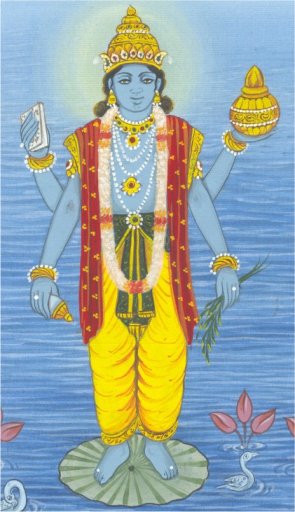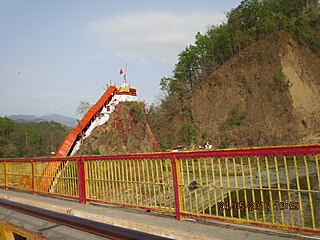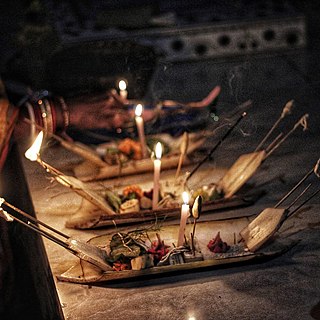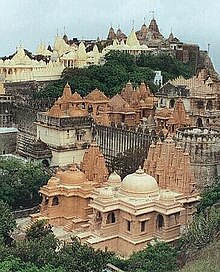
Diwali, also known as Deepavali or the Festival of Lights, is one of the most important festivals in Indian religions. It symbolises the spiritual "victory of light over darkness, good over evil, and knowledge over ignorance". The festival is widely associated with conflagrations between good and evil entities.

Śrāvaṇa is the fifth month of the Hindu calendar. In India's national civil calendar, Śrāvaṇa is the fifth month of the year, beginning on July 23 and ending on August 22. In the Tamil calendar, it is known as Āvani and is the fifth month of the solar year. In lunar religious calendars, Śrāvaṇa begins on the new moon or the full moon and is the fifth month of the year. Srabon is the fourth month of the solar Bengali calendar. It is also the fourth month of the Nepali calendar. Śrāvaṇa is also the second month of Varsha.

Kartika Deepam is a festival of lights that is observed mainly by Hindu Tamils, and also by adherents in the regions of Kerala, Andhra Pradesh, Telangana, Karnataka, and Sri Lanka. Celebrated in Tamilakam since the ancient period, the festival is held on the full moon day of the Kartika (கார்த்திகை) month, called the Kartika Pournami, falling on the Gregorian months of November or December. It is marked on the day the full moon is in conjunction with the constellation of Kartika. It corresponds to the occasion of the Kartika Purnima, though it falls on a different day due to the correction of equinoxes in the Tamil calendar.

Guru Nanak Dev Ji Gurpurab, also known as Guru Nanak's Prakash Utsav, celebrates the birth of the first Sikh guru, Guru Nanak. One of the most celebrated and important Sikh gurus and the founder of Sikhism, Guru Nanak Dev is highly revered by the Sikh community. This is one of the most sacred festivals in Sikhism, or Sikhi. The festivities in the Sikh religion revolve around the anniversaries of the 10 Sikh Gurus. These Gurus were responsible for shaping the beliefs of the Sikhs. Their birthdays, known as Gurpurab, are occasions for celebration and prayer among the Sikhs.

Dhanteras, also known as Dhanatrayodashi, is the first day that marks the festival of Diwali in most of India.

Kārtika is the eighth month of the Hindu calendar, which falls in October and November of the Gregorian calendar. In India's national civil calendar, Kartika is the eighth month of the year, beginning on 23 October and ending on 21 November.

Garjiya Devi Temple is a noted Devi temple located in the Garjiya village near Ramnagar, Uttarakhand, India, on the outskirts of the Corbett National Park. It is a sacred Shakti shrine where Garjiya Devi is the presiding deity. The temple is situated over a large rock in the Kosi River and is one of the most famous temples of the Nainital district, visited by thousands of devotees during Kartik Poornima, a Hindu holy day celebrated on the fifteenth lunar day of Kartik The first priest was Pt. Keshav Dutt Pandey who began worship of Devi Girija. There is also a statue of LakshmiNarayan of 9th century, made from black granite. Many people from nearby areas go there every day to worship in the temple. Many people bathe in the Kosi river near Garjiya temple.
This article lists the traditional festivals and other cultural events in the Odisha region of India. Odisha celebrates 13 festivals in 12 months as the saying goes Bāra Māsare Tera Parba.

Bāli Jātrā, pronounced [bali dʒat̪ɾa], is the major Boita Bandana festival held at Cuttack on Kartik Purnima. It is considered to be one of Asia's largest open trade fair. The festival is held in Odisha, in the city of Cuttack at Gadagadia Ghata of the Mahanadi river, to mark the day when ancient Sadhabas would set sail to distant lands of Bali, as well as Java, Sumatra, Borneo, and Sri Lanka for trade and cultural expansion. To commemorate this, the festival is celebrated every year from the day of Kartika Purnima according to the Odia calendar.

Kapila Theertham is a famous Saivite Temple and Theertham, located at Tirupati in the Tirupati District of Andhra Pradesh, India. The idol is believed to be installed by Kapila Muni and hence Lord Siva here is referred to as Kapileswara.

Chaturmasya, also rendered Chāturmāsa, is a holy period of four months, beginning on Shayani Ekadashi (June-July) and ending on Prabodhini Ekadashi (October-November) in Hinduism. This period also coincides with the monsoon season in India.

Prabodhini Ekadashi, also known as Deva Uttana Ekadashi, is the 11th lunar day (ekadashi) in the bright fortnight of the Hindu month of Kartika. It marks the end of the four-month period of Chaturmasya, when the god Vishnu is believed to be asleep. It is believed that Vishnu sleeps on the day of Shayani Ekadashi, and wakes on this day.

Tulasi Vivaha, also called Tulasi Kalyanam, is a Hindu festival, in which a symbolic ceremonial wedding takes place between a tulasi plant or holy basil and a shaligrama or an amla branch. The Tulasi wedding signifies the end of the monsoon, and the beginning of the wedding season in Hinduism.
Haragapur is a village in Belgaum district in the southern state of Karnataka, India. It is attached to NH-4. Places to visit are Shivaji Fort, Mallikarjun Temple & Navanath Mandir. Village is located on Hilltop. Language spoken here is Kannada

Boita Bandāna also known as Dangā Bhasā, is a traditional Odia maritime and naval festival celebrated annually throughout Odisha, India. The name could be translated as "to float ritual boats and worshipping with lighted lamp" and comes from the tradition of making decorated boats, which are then floated on a river as a symbolic gesture of their ancestors' voyage.
Pūrṇimā is the word for full moon in Sanskrit. The day of Purnima is the day (Tithi) in each month when the full moon occurs, and marks the division in each month between the two lunar fortnights (paksha), and the Moon is aligned exactly in a straight line, called a syzygy, with the Sun and Earth. Full moon is considered the third of the four primary phases of the Moon; the other three phases are new moon, first quarter moon, and third quarter moon. The full moon shows 100% illumination, causes high tides, and can concur with lunar eclipses.
Here is a list of glossary of Culture of India in alphabetical order:

The Dev Deepavali is the festival of Kartik Poornima celebrated in the city of Varanasi in Bhojpur-Purvanchal region of Uttar Pradesh, India. It falls on the full moon of the Hindu month of Kartika and takes place fifteen days after Diwali. The steps of all the ghats on the riverfront of the Ganges River, from Ravidas Ghat at the southern end to Rajghat, are lit with more than a million earthen lamps (diyas) in honour of Ganga, the Ganges, and its presiding goddess. Mythologically, the gods are believed to descend to Earth to bathe in the Ganges on this day. The festival is also observed as Tripura Purnima Snan. The tradition of lighting the lamps on the Dev Deepawali festival day was first started at the Dashashwamedh Ghat by Pandit Kishori Raman Dubey in 1991.
Jain festivals occur on designated days of the year. Jain festivals are either related to life events of Tirthankara or they are performed with intention of purification of soul.




















